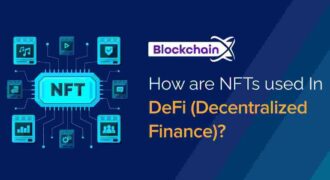Blockchain technology promised decentralization, transparency, and security, but as adoption grows, a critical challenge has emerged: scalability. Networks like Ethereum, Bitcoin, and newer layer-one chains often face congestion, slow transaction speeds, and high fees when user activity spikes.
Enter Artificial Intelligence (AI) — a technology known for pattern recognition, predictive analytics, and automation. Could AI be the key to unlocking scalable, efficient, and adaptive blockchain networks?
Let’s explore how AI is stepping in to tackle one of blockchain’s most pressing challenges.
Understanding the Scalability Problem
Before diving into AI solutions, it’s important to understand why blockchain scalability is such a problem.
- Transaction Throughput Limitations
Blockchains like Bitcoin can process around 7 transactions per second, Ethereum roughly 15–30. Compare that to centralized payment systems like Visa, which handle thousands per second. - Network Congestion
When demand exceeds capacity, transactions backlog, causing delays and higher fees. This is especially evident during DeFi booms or NFT drops. - Energy and Resource Constraints
Proof-of-Work (PoW) blockchains require heavy computation, limiting how fast the network can scale. - Decentralization vs. Speed Trade-Off
Efforts to improve throughput often compromise decentralization or security, creating the “scalability trilemma.”
Scalability isn’t just a technical challenge — it limits adoption and practical use of blockchain applications in finance, logistics, healthcare, and beyond.
How AI Can Contribute to Scalability
Artificial Intelligence brings adaptability, predictive modeling, and automation to systems that traditionally rely on fixed rules. Here’s how AI can help:
1. Predictive Network Optimization
AI can analyze historical and real-time transaction data to predict periods of network congestion. By forecasting spikes, networks can:
- Allocate resources dynamically.
- Adjust block sizes or transaction fees proactively.
- Optimize consensus mechanisms for peak efficiency.
For example, machine learning models can predict Ethereum gas spikes before they happen, enabling smart contracts or dApps to schedule transactions for optimal timing.
2. Intelligent Consensus Mechanisms
Consensus algorithms are the backbone of blockchain, but many are slow or resource-intensive. AI can enhance or even redesign these mechanisms by:
- Predicting validator behavior in Proof-of-Stake (PoS) systems.
- Optimizing leader selection or block propagation.
- Reducing the computational burden of mining or validation.
In other words, AI can help make consensus both faster and smarter, without compromising security.
3. Transaction Prioritization
Not all blockchain transactions have equal importance. AI can classify transactions based on:
- Value or urgency
- User history and reputation
- Potential impact on network congestion
By prioritizing high-value or time-sensitive transactions, AI helps networks maintain smooth operations even during peak load.
4. Dynamic Sharding
Sharding — splitting a blockchain into smaller, parallel chains — is a popular solution for scalability, but manual shard allocation is complex.
AI can:
- Predict which shards will experience higher demand.
- Dynamically redistribute data and transactions across shards.
- Prevent bottlenecks and improve throughput.
Essentially, AI can enable adaptive sharding, making blockchain systems more flexible and efficient.
5. Adaptive Smart Contracts
AI can also help optimize smart contracts themselves.
- Contracts could dynamically adjust execution priorities based on network load.
- Predictive algorithms could identify which contract calls are likely to be resource-intensive and schedule them efficiently.
This reduces execution delays and failed transactions, making decentralized applications faster and more reliable.
Real-World Examples and Initiatives
While AI-powered blockchain scalability is still emerging, several projects illustrate its potential:
- Fetch.ai (FET)
Combines AI and blockchain to optimize resource allocation for autonomous agents, which could reduce congestion in decentralized networks. - Ocean Protocol
Uses AI for intelligent data distribution and verification, ensuring efficient on-chain resource usage. - Ethereum Research
Researchers are exploring AI for predictive gas optimization and adaptive layer-two scaling solutions. - Algorand & Cardano
Both are experimenting with AI-based analytics for transaction efficiency, validator selection, and throughput prediction.
Benefits of AI-Driven Scalability Solutions
- Faster Transactions: AI helps anticipate congestion and optimize block processing.
- Lower Fees: Dynamic resource allocation prevents unnecessary network overloading.
- Improved User Experience: Predictive models reduce failed transactions and delays.
- Sustainable Growth: AI reduces wasted computation, improving energy efficiency for PoW and PoS systems.
- Smarter Networks: Machine learning allows blockchain systems to adapt autonomously as usage patterns change.
Challenges and Limitations
Despite the promise, AI-driven scalability solutions face hurdles:
- Data Privacy
AI thrives on data, but blockchain emphasizes privacy and decentralization. Striking a balance is critical. - Integration Complexity
Merging AI with blockchain requires advanced expertise in both domains. Errors could compromise network stability. - Energy Costs
AI computations themselves require energy. Without optimization, combining AI and blockchain could worsen environmental concerns. - Security Risks
AI-driven automation might introduce vulnerabilities if algorithms are manipulated or exploited. - Regulatory Uncertainty
Regulators may not yet fully understand AI-assisted blockchain systems, leading to compliance challenges in financial and global markets.
Africa’s Potential in AI + Blockchain Scalability
For Africa, AI-assisted blockchain scalability presents a huge opportunity. The continent has become a hotspot for crypto adoption, fintech innovation, and digital entrepreneurship.
AI-driven solutions could help:
- Enable high-volume mobile payment networks without congestion.
- Support DeFi and NFT platforms for African creators and investors.
- Drive smart supply chain applications, using scalable, decentralized networks.
By combining AI with blockchain, Africa could leapfrog traditional infrastructure challenges, building efficient, adaptive, and inclusive digital ecosystems.
The Road Ahead
AI and blockchain together could provide the key to solving scalability issues — but it won’t happen overnight.
Future networks might feature:
- Self-optimizing layer-one protocols that adapt in real time.
- AI-powered sharding and transaction prioritization for global adoption.
- Autonomous smart contracts that execute efficiently under heavy load.
Ultimately, AI doesn’t just promise faster transactions — it promises smarter, more resilient, and adaptable blockchain systems capable of handling mass adoption.
Final Thoughts
Blockchain scalability is a critical barrier to the widespread adoption of decentralized technology. Artificial Intelligence offers a powerful toolkit — predictive models, adaptive algorithms, and automated optimization — to address these challenges.
While hurdles remain, the fusion of AI and blockchain represents a promising path forward: networks that are fast, efficient, and intelligent, capable of meeting the demands of a growing digital economy.
The question isn’t whether AI can help solve blockchain scalability — it’s how quickly the technology can evolve to meet the demands of tomorrow’s decentralized world.










